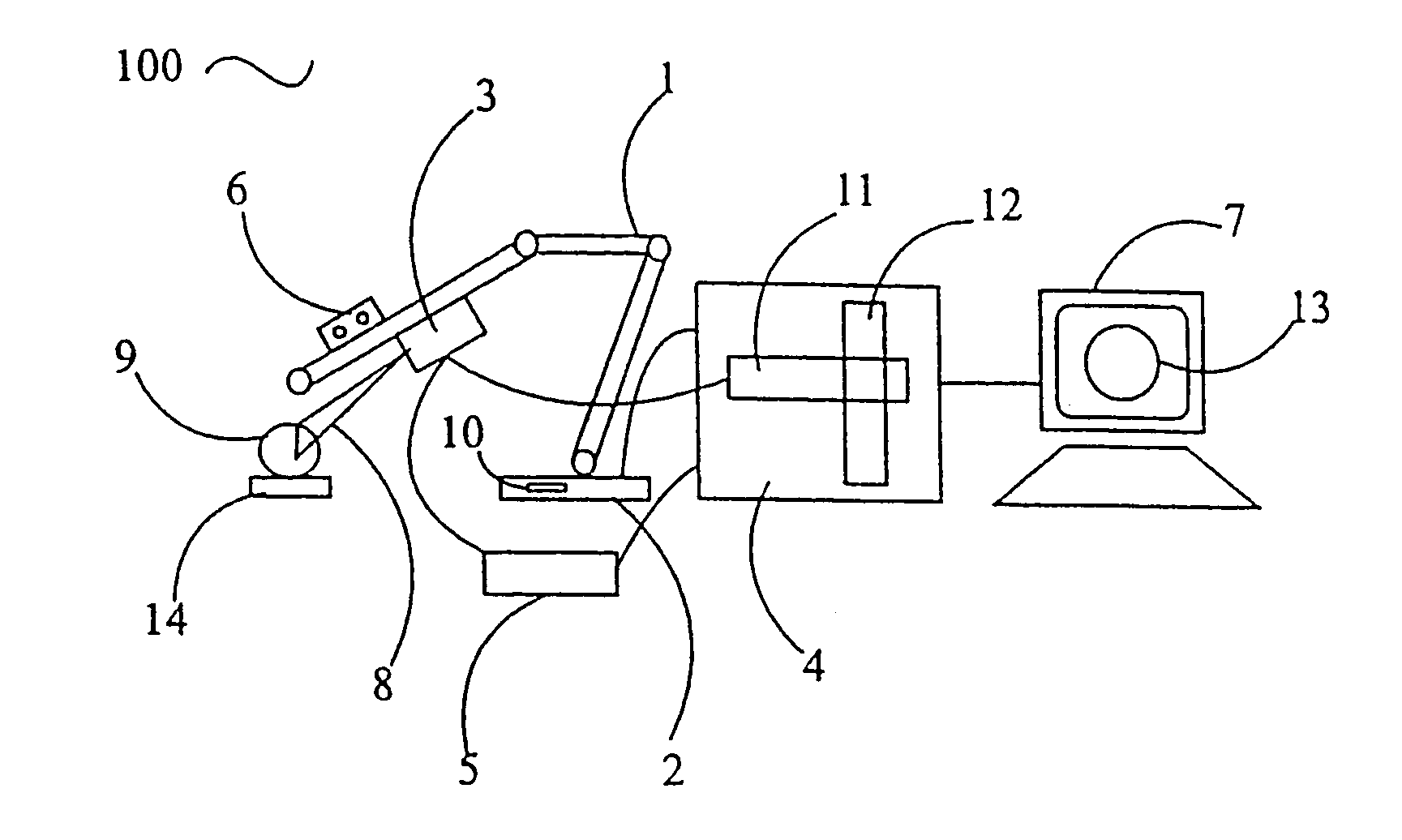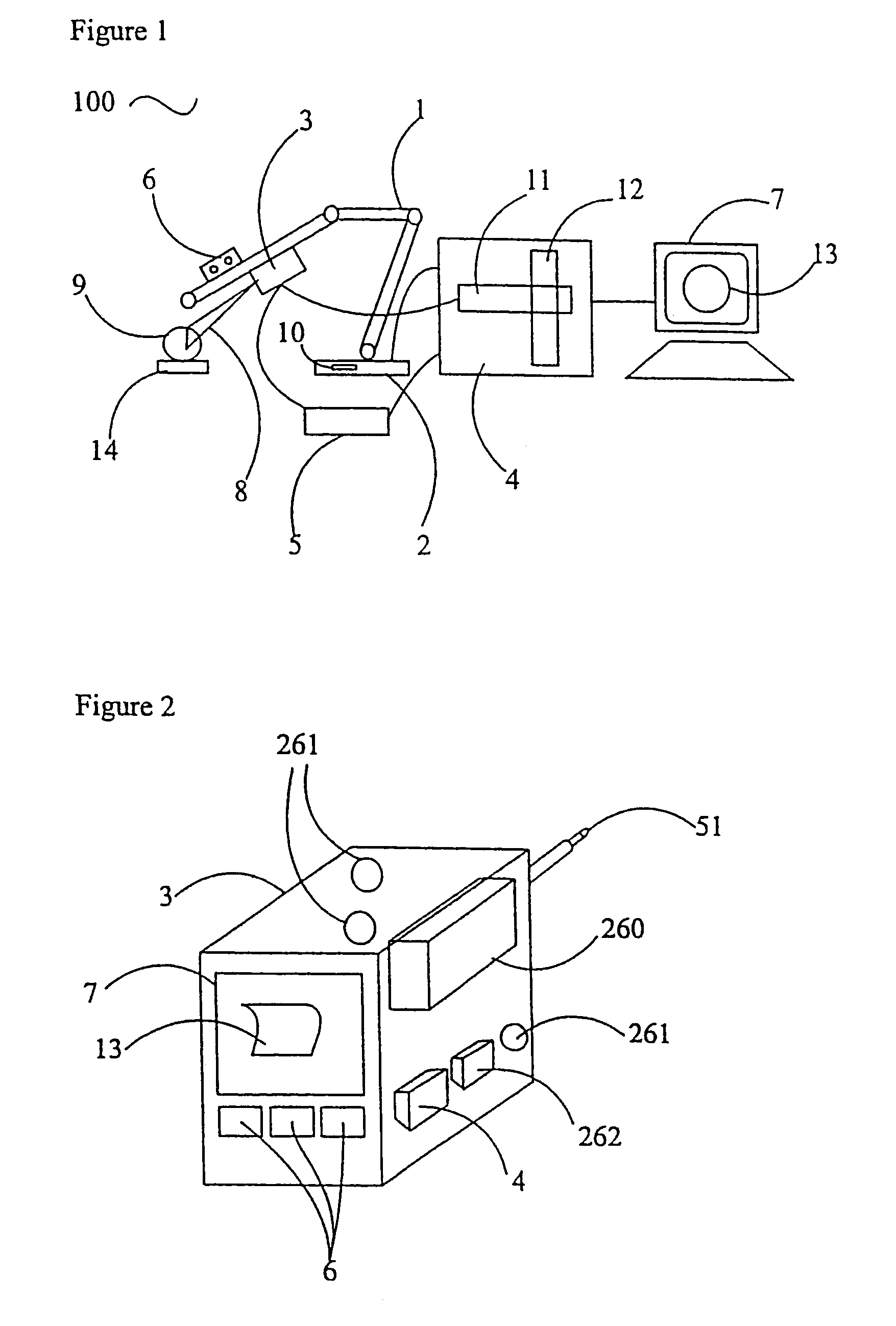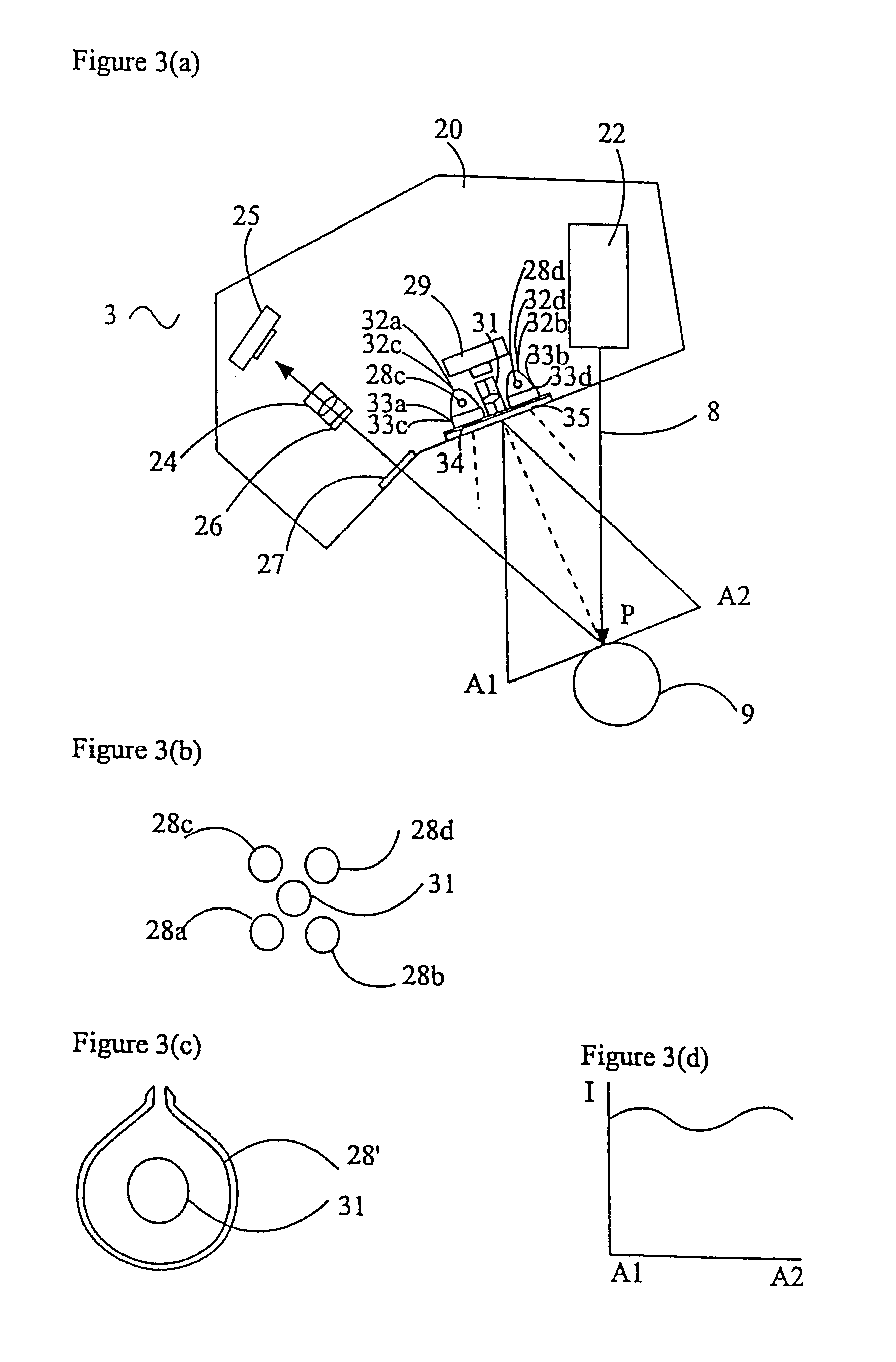Scanning apparatus and method
a three-dimensional object and scanning apparatus technology, applied in the field of scanning apparatus and methods, can solve the problems of difficult scanning of real-world, three-dimensional objects, difficult line of sight, high cost of cnc machines, etc., and achieve the effect of reducing time and cost of generating and quickly scanning the surface of objects
- Summary
- Abstract
- Description
- Claims
- Application Information
AI Technical Summary
Benefits of technology
Problems solved by technology
Method used
Image
Examples
Embodiment Construction
[0080]Referring now to FIG. 1, a scanning apparatus 100 comprises a multiply-jointed arm 1 with an arm control unit 2 and a probe 3. The control unit 2, which includes a processing unit 10, is coupled to a computer or processing unit 4 and color monitor 7. The probe 3 is also coupled to a probe control unit 5 that is likewise coupled to the computer 4. The intermediate data is displayed on the color monitor 7 as rendered polygons 13. The probe 3 provides a stripe 8, which is projected onto an object 9 positioned on a turntable 14. The stripe 8 is in the form of a plane of light. Buttons 6 are also provided to control data capture. A color frame grabber 11 in the computer 4 is mounted on a standard bus 12 and coupled to the probe 3.
[0081]The computer 4, probe control unit 5, arm control unit 2, buttons 6, color frame grabber 11, and monitor 7 are provided separately. For example, the computer 4 and monitor 7 may be a personal computer and VDU, although for certain applications, it ma...
PUM
 Login to View More
Login to View More Abstract
Description
Claims
Application Information
 Login to View More
Login to View More - R&D
- Intellectual Property
- Life Sciences
- Materials
- Tech Scout
- Unparalleled Data Quality
- Higher Quality Content
- 60% Fewer Hallucinations
Browse by: Latest US Patents, China's latest patents, Technical Efficacy Thesaurus, Application Domain, Technology Topic, Popular Technical Reports.
© 2025 PatSnap. All rights reserved.Legal|Privacy policy|Modern Slavery Act Transparency Statement|Sitemap|About US| Contact US: help@patsnap.com



